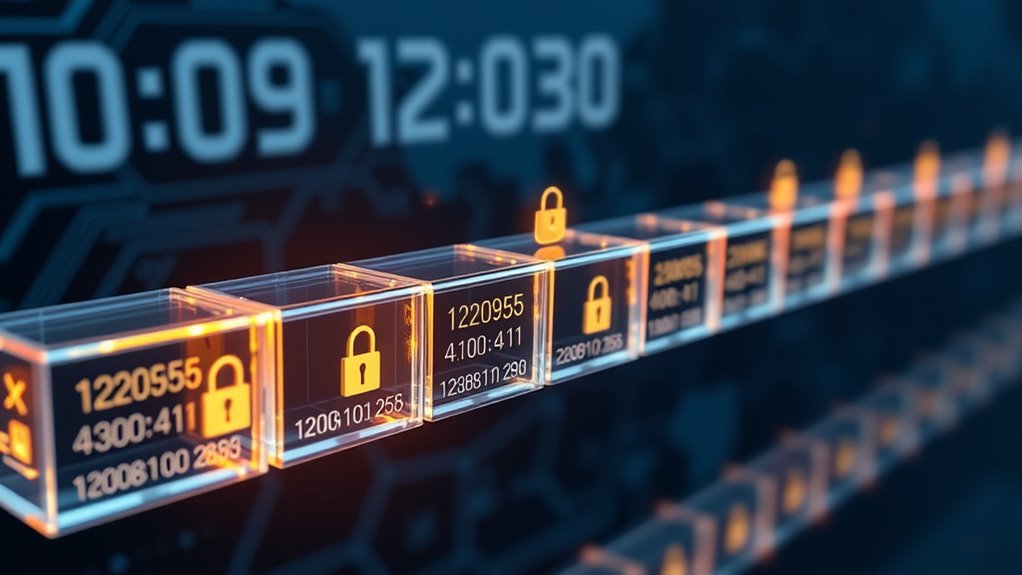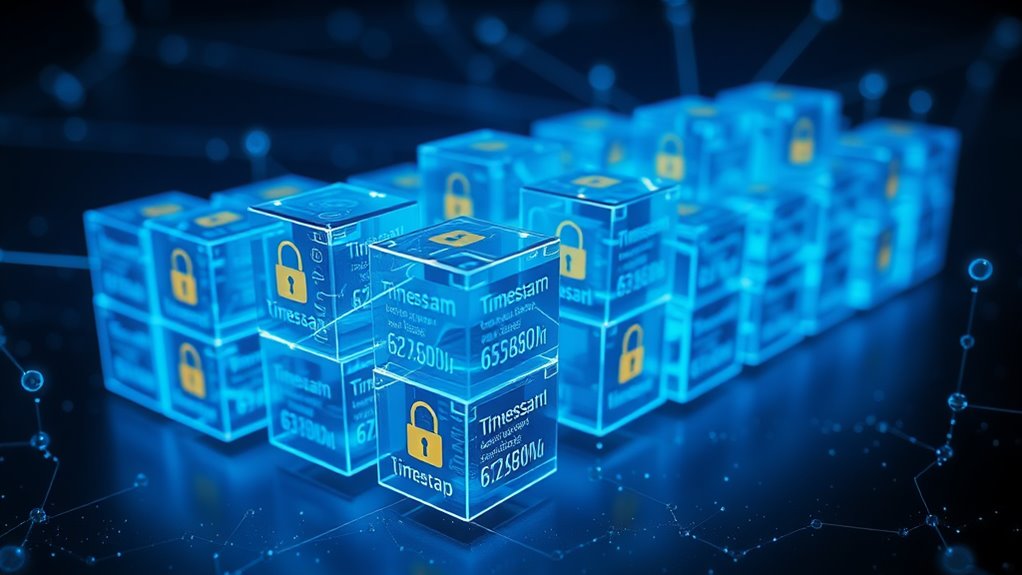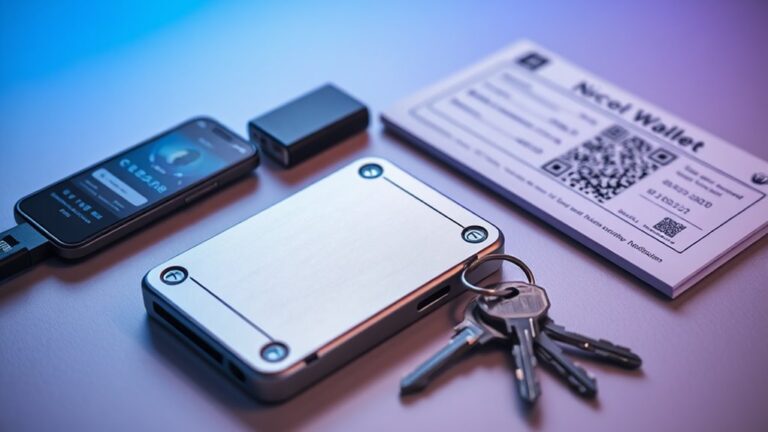Blockchain Timestamping: Ensuring Secure Records
Note: This post may contain affiliate links, and we may earn a commission (with No additional cost for you) if you purchase via our link. See our disclosure for more info. The gold and crypto world is constantly changing. This is not financial, investment, legal, or professional advice. So, please verify the information on the gold and cryptocurrency provider’s websites.
Blockchain timestamping is the superhero of secure records. It locks down when events happen, creating a bulletproof diary that's impossible to mess with. Thanks to cryptographic hashing, any slight change sends alarms ringing. And forget about central control – it's decentralized, so no one gets to play dictator over the records. You can trust these timestamps—they're verified, transparent, and totally accountable. Want more on how this all works? Stick around for the next details.

Blockchain timestamping: a fancy term for a pretty straightforward concept. It's about keeping records of when something happened, and making sure nobody can mess with that. Think of it as a super-secure diary that even a ninja couldn't sneak into.
At its core, blockchain uses cryptographic hashing to create digital fingerprints for data blocks, ensuring that a single change sends alarm bells ringing. If someone tries to alter a timestamp, the block hash changes, and everyone can see it. Good luck being sneaky.
Blockchain's cryptographic hashing acts like an alarm system—one tiny change, and everyone knows you've been caught red-handed.
Now, let's talk about consensus mechanisms, like Proof of Work or Proof of Stake. These methods are like the bouncers at a club, deciding who gets in and who doesn't. They validate timestamps and make sure nobody is pulling a fast one. If you think you can backdate or duplicate a timestamp, think again. The blockchain's security rules, like Median Pass Time, make sure everything is lined up chronologically. It's like a strict parent ensuring you're home by curfew.
Then there's the beauty of the decentralized ledger. Imagine a group project where everyone has a copy of the same document. No one person controls it, so no one can just erase their mistakes. This distributed architecture prevents central control, making it nearly impossible for a single bad actor to alter records. Furthermore, the integrity of timestamps ensures that all recorded times can be trusted, reinforcing the reliability of blockchain systems. This decentralized network eliminates central points of failure, further enhancing the security of the records.
But wait, there's more! Blockchain also provides transparency. The immutable audit trails give you permanent records for compliance. Yes, that means you can't just write over your mistakes. Public visibility allows real-time verification, so everyone can check timestamps and transaction IDs. These records become immutable once verified by network nodes and added to the blockchain. It's the ultimate accountability tool.
In a world where fraud lurks around every corner, blockchain timestamping stands tall. With its tamper-proofing and immutability features, it creates an unalterable history. If you're looking for a way to keep things honest, this is it. No more shady business. Just pure, unfiltered transparency.
Frequently Asked Questions
How Does Blockchain Timestamping Differ From Traditional Timestamping Methods?
Blockchain timestamping is a game-changer. Unlike traditional methods that depend on a single, cozy authority (hello, notaries), blockchain relies on a whole network.
No more shady business or insider tampering. It's all about decentralized verification. Plus, once a timestamp is on the blockchain, it's there for good—no going back.
With public access and transparency, everyone can see the records. Traditional systems? Well, they're just begging for manipulation. It's a whole different ball game.
Can Blockchain Timestamping Be Used for Personal Documents?
Sure, blockchain timestamping can totally be used for personal documents.
Think about it. It offers rock-solid proof that a document existed at a certain time. No shady backdating or “Oops, I didn't modify that!” nonsense. It's all about keeping things real and secure, right?
Plus, it's handy for stuff like contracts or medical records. Who wouldn't want to show, “Hey, I had this first!” in the world of personal documents?
What Industries Benefit Most From Blockchain Timestamping?
So, which industries really cash in on blockchain timestamping?
Finance and banking, for sure. They love the security.
Then there's supply chain management, tracking goods like pros.
Legal folks? They're all about document authentication.
Creative industries aren't left out, either. They use it to protect their precious art and music.
Basically, if you need records that can't be messed with, blockchain's got your back, no questions asked.
Is Blockchain Timestamping Environmentally Friendly?
Is blockchain timestamping environmentally friendly?
Well, it's a bit of a mixed bag.
Sure, some newer systems use less energy than traditional methods, but the infamous proof-of-work blockchains? They're energy hogs.
Think Bitcoin guzzling power like it's going out of style.
Then there's the risk of AI integration, which can crank up that energy consumption even more.
How Much Does Blockchain Timestamping Typically Cost?
The cost of blockchain timestamping? It's a mixed bag.
Prices depend on the network—Bitcoin can be pricey during busy times, while Ethereum's fees can be a rollercoaster.
Free options exist, sure, but they come with strings attached.
Want fancy features? Get ready to pay.
Enterprise solutions? They'll charge you for the privilege.
Hidden costs lurk too, like compliance headaches.












